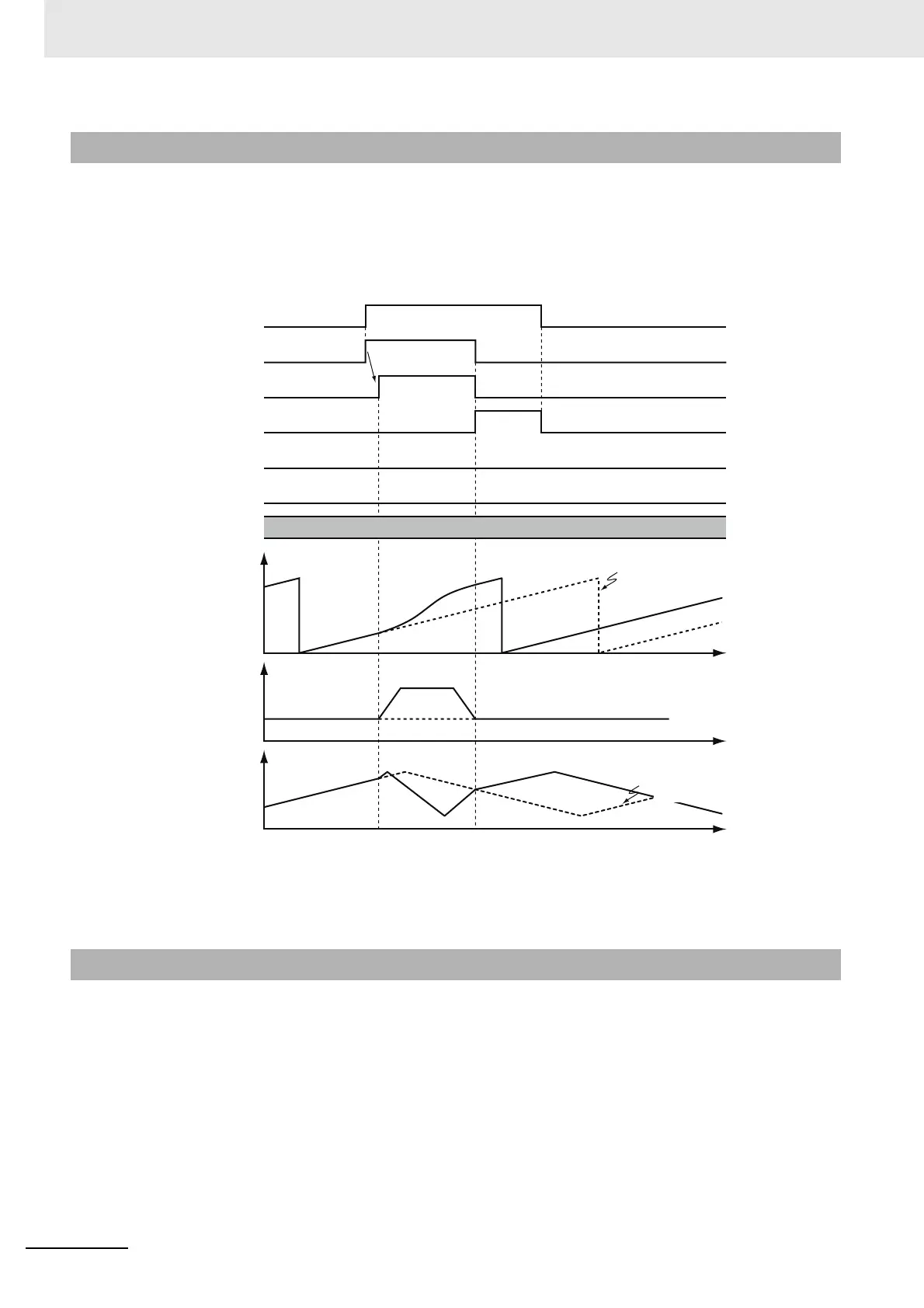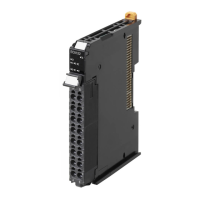9 Motion Control Functions
9-26
NJ/NX-series CPU Unit Motion Control User’s Manual (W507)
The phase of the master axis as viewed from the slave axis can be shifted for the current instruction.
The shift amount as viewed from the slave axis is a relative amount. During synchronization, the slave
axis will synchronize to the relative distance of the master axis. You can execute the MC_Phasing (Shift
Master Axis Phase) instruction to shift the phase for a synchronized control instruction.
You can specify the phase shift amount, target velocity, acceleration rate, deceleration rate, and jerk for
the MC_Phasing (Shift Master Axis Phase) instruction.
For details on the shift master axis phase function and the synchronized control instructions for which a
master axis phase shift can be applied, refer to the MC_Phasing (Shift Master Axis Phase) instruction in
the NJ/NX-series Motion Control Instructions Reference Manual (Cat. No. W508).
This function compensates the position of the slave axis currently in synchronized control.
An offset calculated from the value of the input variable is added to the command current position. The
result is output to the Servo Drive to compensate the position of the slave axis in synchronized control.
Even when the MC Function Module commands the same travel distance to two axes, their actual
travel distance may be different due to mechanical strain or other factors. This function can perform
compensation in such a case.
To perform position compensation for the slave axis in synchronized control, execute the MC_SyncOff-
setPosition (Cyclic Synchronous Position Offset Compensation) instruction.
9-2-8 Master Axis Phase Shift
9-2-9 Slave Axis Position Compensation
Execute
Busy
Active
Done
CommandAborted
Error
ErrorID
16#0000
Time
Time
Time
Actual master
axis position
Slave axis position
Master axis velocity
as viewed from the
slave axis
Master axis position
as viewed from the
slave axis
Slave axis
position when
phase offset is 0

